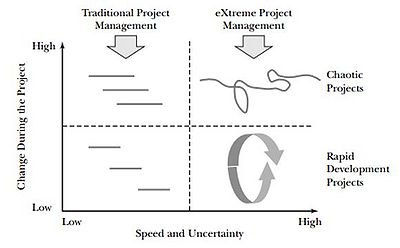Situation Analysis in Problem-Solving Cycle
The situation analysis is the first and crucial step in the problem solving cycle which leads to a broad basis of understanding of a situation. With this step starts search for goals and continues with defining and analysing the problem. It includes systematic collection and evaluation of economical, social, political and technological data which helps to identify external and internal factors that may affect the performance of any organization and its' choice of strategies. Moreover it aims at assessment of current and future strengths, weaknesses, opportunities and threats. The core of the situation analysis is composed of four basic approaches that are closely interrelated.[1] First approach is a system-oriented view which is used in order to structure the problem area. Next is cause-oriented view which helps to understand the situation and cause-effect relations of the problem. Then possible solutions and alternatives are provided within solution-oriented view and as a fourth approach to the future-oriented view brings all the listed ones previously at one point and shifts the perspectives from the present situation to the future with possible development opportunities. With the situation analysis is gained knowledge about the structure of the system which is going to be investigated together with its' features. Furthermore, project managers achieve list of present possible solutions and a more precise description of the problem. Basically there are four steps of the situation analysis and depending on the problem they could get different importance, thus it adapts to specific situation. The four steps are:
- Task analysis
- Analysis of the current state
- Analysis of the future state
- Summary of the problem and identification of actions to be taken [1]
Contents |
Abstract
In this article will be presented the importance and utility of situation analysis in problem solving cycle. Describing major concepts and key elements for its' successful application. First of all, the task analysis is performed where comprehensive overview is captured with basic knowledge of what is the task and what are the underlying problems, the cause and expectations. Thus this task analysis starts the definition of the project area. Next steps are to investigate Current and Future states. However approach to both states is different. In the analysis of the current state a system of demarcation is established providing information about relevant parties of the problem and mapping it in relation to each other. This helps to specify, communicate and adapt the scope of the project. Also it shows areas of investigation and intervention, or basically areas where influence will be visible. Furthermore, the interaction between current system and its' environment is considered and evaluated. This gives better perception of the whole structure, functions of each part and relations in between. Then continuing with identification of strengths and weaknesses in the system contributes to the start of SWOT analysis. In addition cause analysis is performed. Considering future state analysis it consists of prediction of environment behaviour and impact of this behaviour on the system. This is all more about trying to foresee the possible trends of the system and what actually it could bring in the future. Here should be deliberated all possible scenarios and development of key factors. Should be mentioned that all this is performed based on system demarcation. Several methods are used for it and extrapolation of data is expected. Crucial point here would be prediction of the impact of the behaviour on the system which would include identification of opportunities and threats of problem solving. And finally, one of the last steps would be the systematic evaluation of the analysis of strengths, weaknesses, opportunities and threats. To do this SWOT analysis is used. The interaction between those four properties is under the loop at this point. To finish up with the situation analysis, the summary is provided, where finalized problem is described and focus area is identified.
Task Analysis
The task analysis performance is where comprehensive overview is captured with basic knowledge of what is the task and what are the underlying problems, the cause and expectations. Thus this task analysis starts the definition of the project area. Therefore, the most proper way to start analysing the task is to begin with an approach towards problem identification. There are many different ways to identify the problem, but the three main aspects should be considered. [2] First of all, it should matter to any project manager to avoid the possibility to be blind-sided. Sometimes, simply they misinterpret or do not pay enough attention to warnings which evolves over time until it is too late to respond properly. A second most common mistake in problem identification is lack of recognition of how significant the issue is. That leads to not sufficient enough allocation or resources in order to solve it. The last, but not the least common error is overreaction.
Analysis of Current State
Demarcate the System
System and Environment Analysis
Strengths and Weaknesses
Root Cause Analysis
Analysis of Future State
Predicting Behaviour of the Environment
Opportunities and Threats
SWOT Analysis
Summary of the Problem
References
[1] Züst R. and Troxler P. (2006) No More Muddling Through Mastering Complex Projects in Engineering and Management, Rotterdam: Springer
[2] http://www.referenceforbusiness.com/management/Or-Pr/Problem-Solving.html
Cite error:
<ref> tags exist, but no <references/> tag was found
